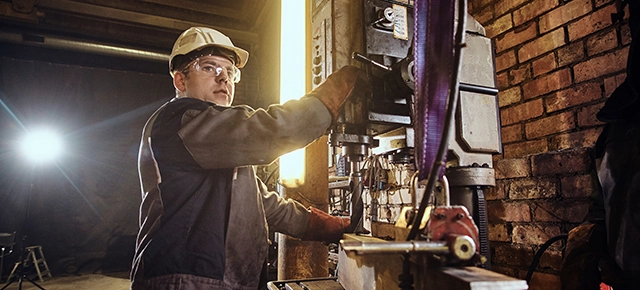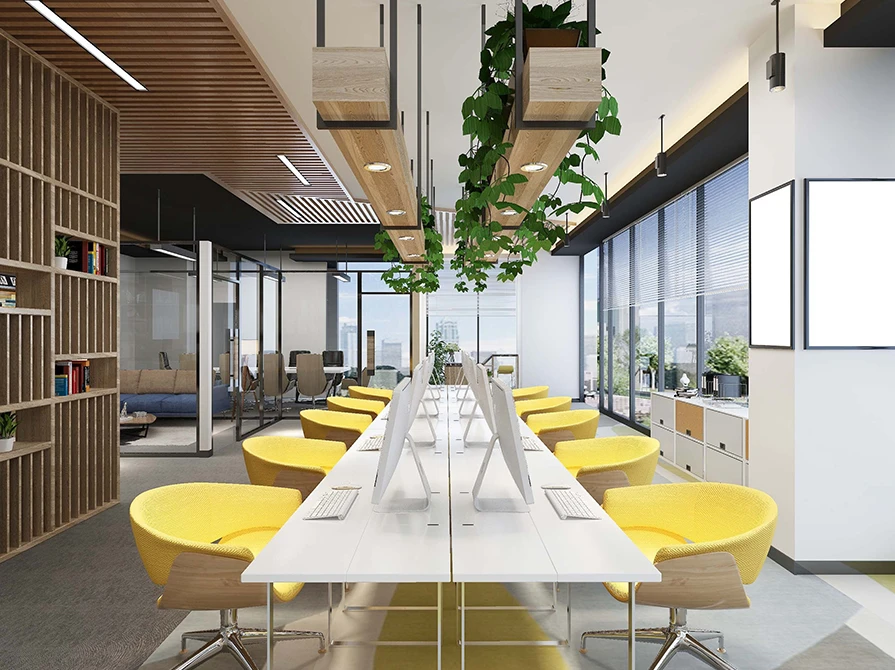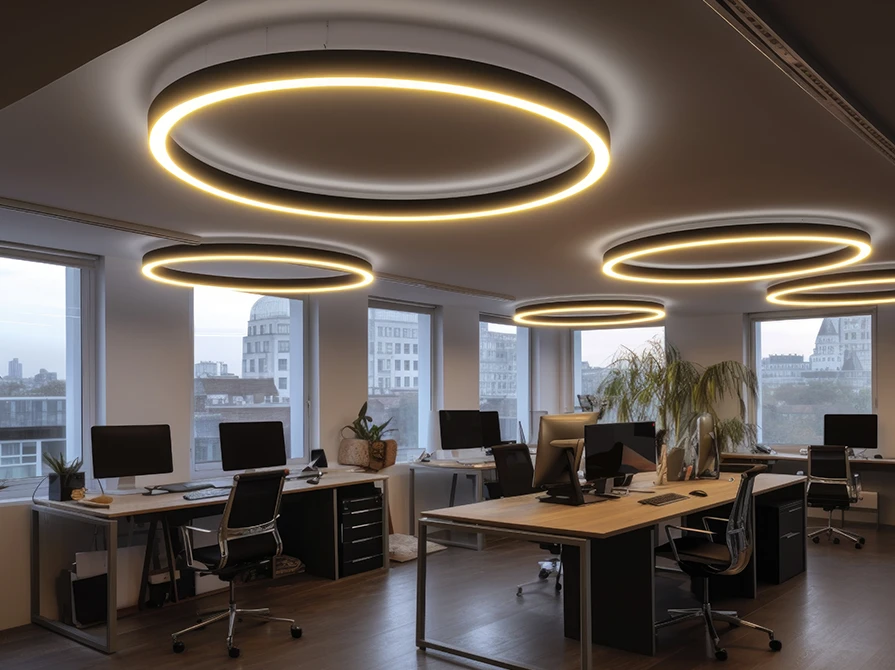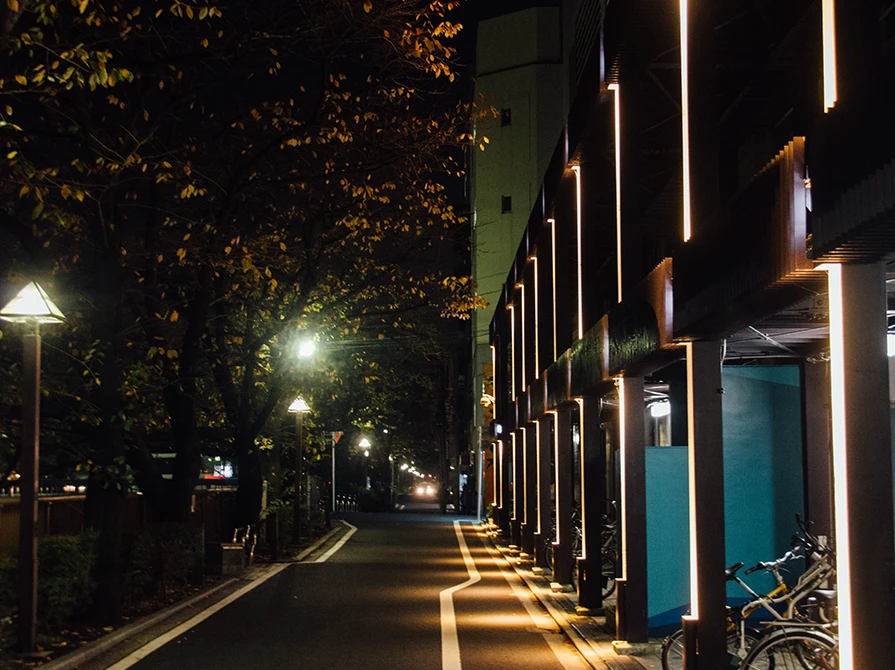


In industrial settings, productivity is paramount. Achieving optimal productivity involves more than just streamlining processes and training employees; it also hinges on the work environment, including one crucial but often overlooked aspect: lighting. Proper industrial lighting can significantly enhance efficiency by improving visibility, reducing errors, increasing worker comfort, and even saving energy. This blog delves into how industrial lighting boosts productivity, exploring various strategies and technologies that can transform workspaces.
Visibility is crucial in industrial environments where precision and speed are essential. Poor lighting can lead to mistakes, slow down tasks, and increase the risk of accidents. Here’s how improved lighting enhances visibility:
Task Lighting: Providing targeted illumination for specific tasks ensures that workers can see clearly what they are doing. For instance, assembly lines benefit from bright, focused lighting that highlights small parts and intricate details, reducing errors and increasing assembly speed.
Uniform Lighting: Evenly distributed lighting prevents shadows and dark spots that can obscure hazards or important details. This is particularly important in large spaces like warehouses, where workers need to move quickly and safely.
High-CRI Lighting: The Color Rendering Index (CRI) measures a light source’s ability to reveal the true colors of objects. High-CRI lighting improves color accuracy, essential for quality control and tasks requiring color differentiation, thereby reducing mistakes and rework.
Eye strain and fatigue are common issues in poorly lit environments, leading to decreased productivity and increased errors. Proper lighting can mitigate several problems and contribute to worker productivity.
Adequate Light Levels: Ensuring that lighting levels are appropriate for the tasks at hand reduces eye strain. Overly dim or overly bright environments can both cause discomfort. Adjustable lighting solutions allow for the customization of light levels to suit specific activities.
Glare Reduction: Glare from lights can cause eye strain and reduce visibility. Using anti-glare fixtures, diffusers, and proper positioning of lights can minimize glare, creating a more comfortable and productive work environment.
Natural Light Integration: Incorporating natural light can improve worker well-being and reduce eye strain. Skylights, windows, and light tubes that bring natural light into the workspace not only enhance visibility but also positively impact mood and energy levels.
Comfortable workers are productive workers. Industrial lighting plays a significant role in creating a comfortable work environment.
Circadian Lighting: Lighting that mimics the natural progression of daylight can help regulate workers' circadian rhythms, improving sleep quality and overall health. Dynamic lighting systems that adjust color temperature and intensity throughout the day can enhance alertness and productivity.
Temperature Control: Traditional lighting sources like incandescent and fluorescent bulbs generate significant heat, which can make industrial spaces uncomfortable. LED lighting, on the other hand, produces minimal heat, helping to maintain a comfortable temperature and reducing the load on cooling systems.
Noise Reduction: Flickering lights and ballasts in fluorescent fixtures can produce distracting noise. Modern LED fixtures are silent, contributing to a quieter and more focused work environment.
Energy-efficient lighting not only reduces operational costs but also supports sustainability initiatives, indirectly boosting productivity.
LED Lighting: LEDs consume less energy and have a longer lifespan than traditional lighting, resulting in lower energy bills and reduced maintenance costs. The savings can be reinvested into other productivity-enhancing initiatives.
Smart Lighting Controls: Integrating smart controls such as motion sensors, occupancy sensors, and daylight harvesting systems optimizes energy usage by ensuring lights are only on when needed. These controls can lead to significant energy savings and operational efficiency.
Sustainability: Energy-efficient lighting reduces the carbon footprint of industrial facilities, contributing to environmental sustainability. Many companies find that sustainable practices improve employee morale and attract eco-conscious customers, indirectly boosting productivity.
Safety is a critical factor in giving workers the confidence to work productively in industrial settings. Proper lighting reduces the risk of accidents and associated downtime.
Emergency Lighting: Adequate emergency lighting ensures that workers can evacuate safely in case of power outages or emergencies, minimizing injury risks and downtime.
Hazard Identification: Well-lit workspaces make it easier to spot potential hazards, such as spills, obstacles, or damaged equipment. This proactive approach to safety can prevent accidents and the resulting disruptions.
Maintenance-Friendly Lighting: Lighting solutions that are easy to maintain and replace reduce downtime associated with lighting failures. LEDs, with their long lifespan and minimal maintenance requirements, are ideal for this purpose.
In many industrial applications, precision and accuracy are paramount. Proper lighting supports high standards of quality control, encouraging workers to work more efficiently.
Inspection Lighting: Bright, focused lighting is essential for inspection tasks, allowing workers to detect defects and inconsistencies in products. This ensures that only high-quality items proceed down the production line, reducing rework and waste.
Consistent Lighting Conditions: Consistent and reliable lighting prevents variations that could affect quality control processes. Automated systems that maintain stable light levels contribute to consistent product quality.
Color Accuracy: High-CRI lighting ensures accurate color rendering, crucial in industries like painting, printing, and textiles. This accuracy helps maintain quality standards and reduces the likelihood of costly mistakes.
Industrial environments are dynamic, with changing tasks and processes. Flexible lighting solutions can adapt to these changes, enhancing productivity.
Adjustable Fixtures: Adjustable lighting fixtures that can be repositioned or tilted allow for quick adaptation to new tasks or layouts. This flexibility supports changing workflows and minimizes disruptions.
Modular Systems: Modular lighting systems that can be easily expanded or reconfigured provide the versatility needed in dynamic industrial settings. This adaptability ensures that lighting remains effective as processes evolve.
Dimmable Lights: Dimmable lighting allows for precise control over light levels, supporting various activities and conserving energy. Workers can adjust the lighting to their specific needs, enhancing both comfort and productivity.
Proper lighting is a critical yet often underestimated component of industrial productivity. By enhancing visibility, reducing eye strain and fatigue, increasing worker comfort, and supporting safety, efficient lighting solutions create an environment where workers can perform at their best. The integration of advanced technologies such as LED lighting and smart controls further boosts efficiency by optimizing energy usage and reducing costs.
Investing in modern, well-designed lighting solutions is an investment in the workforce and the overall success of the industrial operation. As industries continue to evolve, staying abreast of lighting innovations and implementing best practices will ensure that productivity remains in the spotlight. Contact us to know more about how our lighting solutions can help boost the productivity of your workforce.







